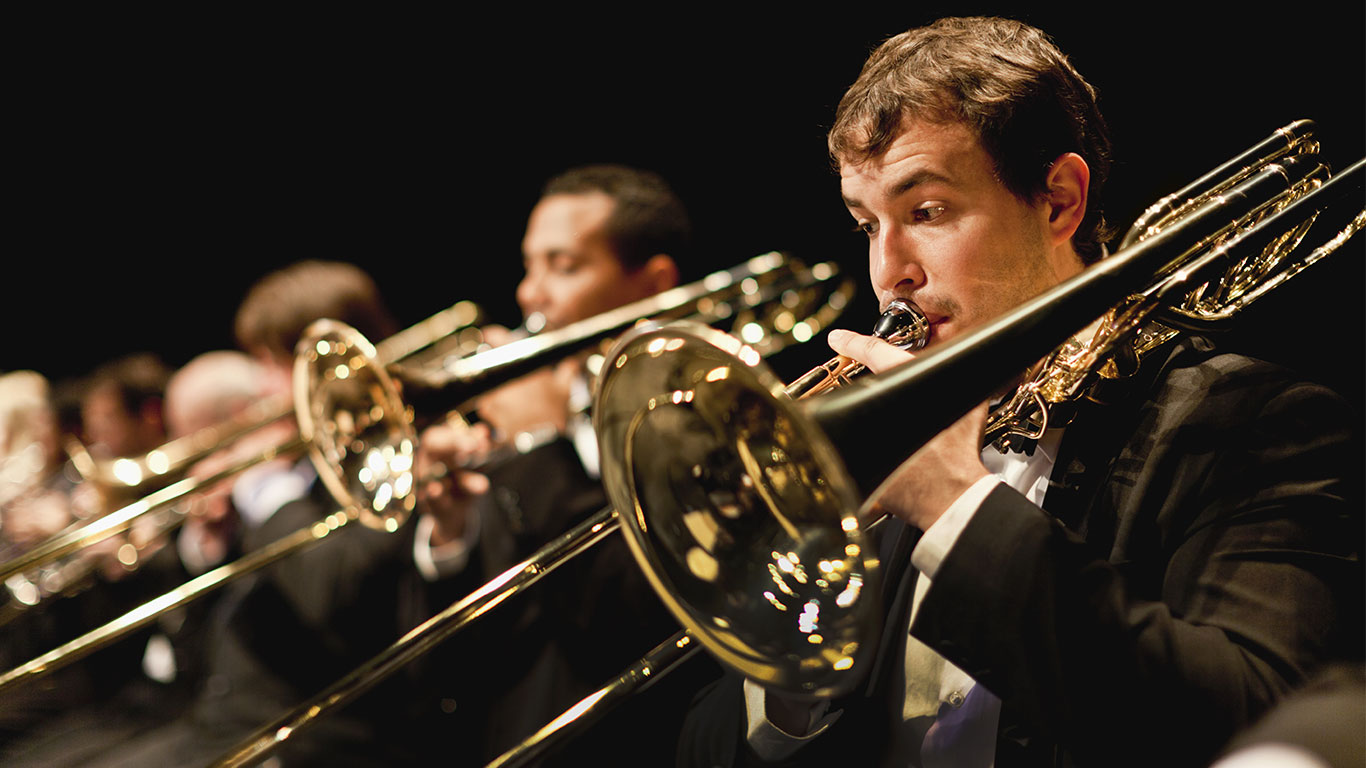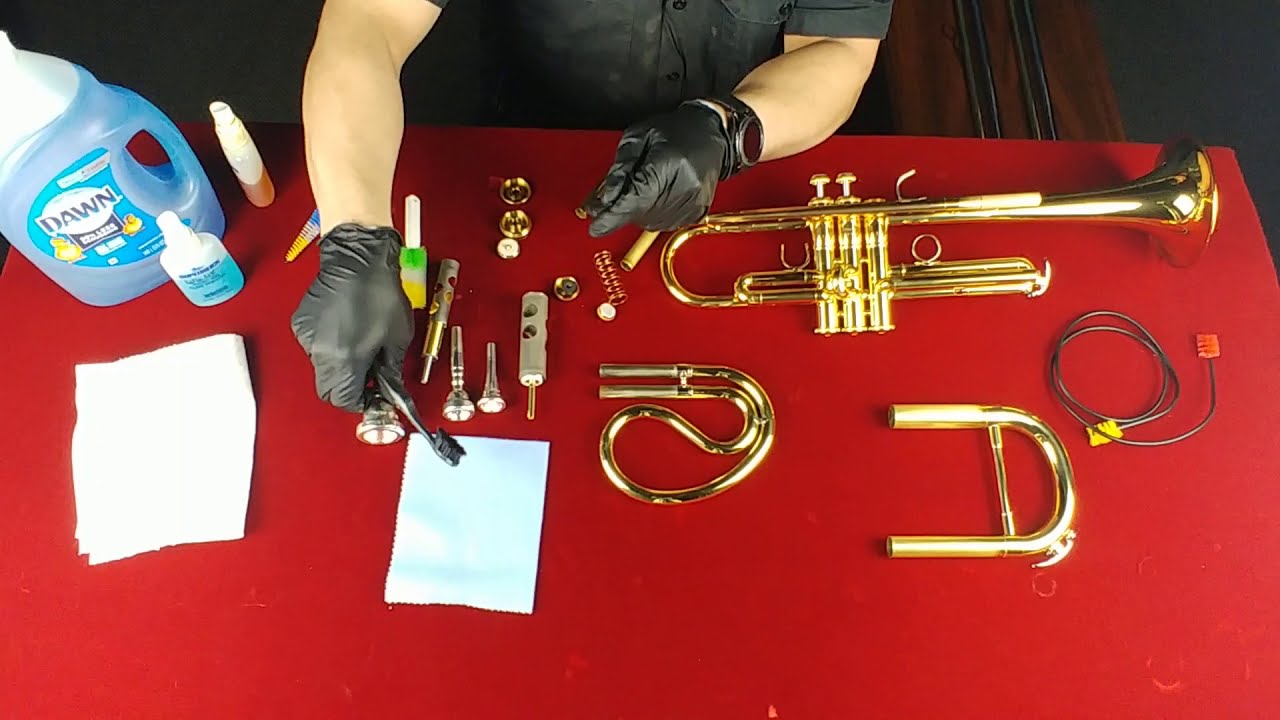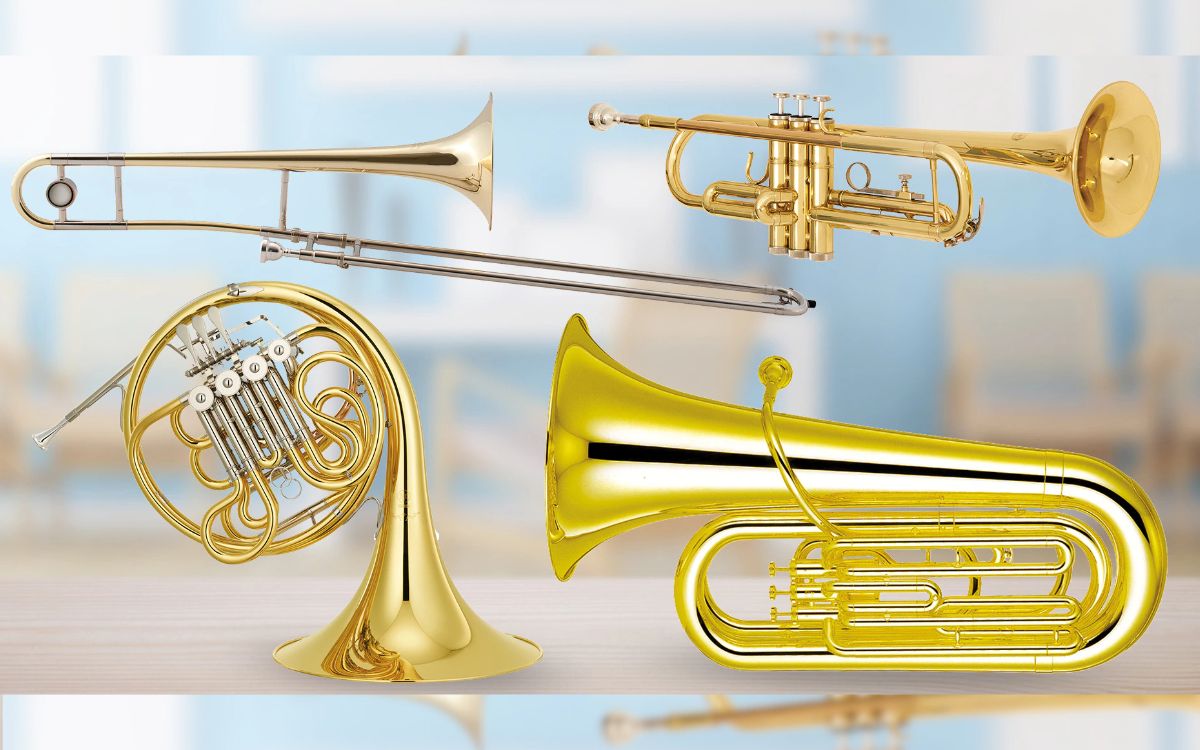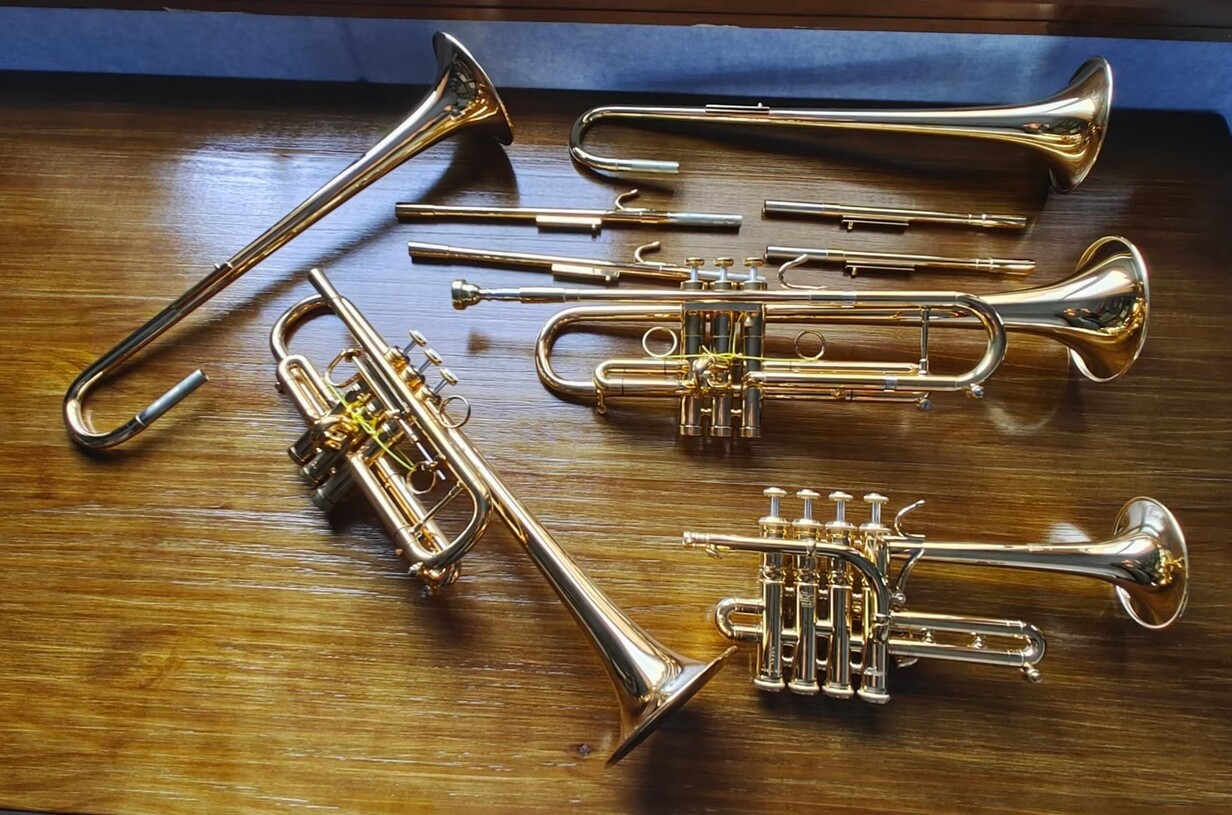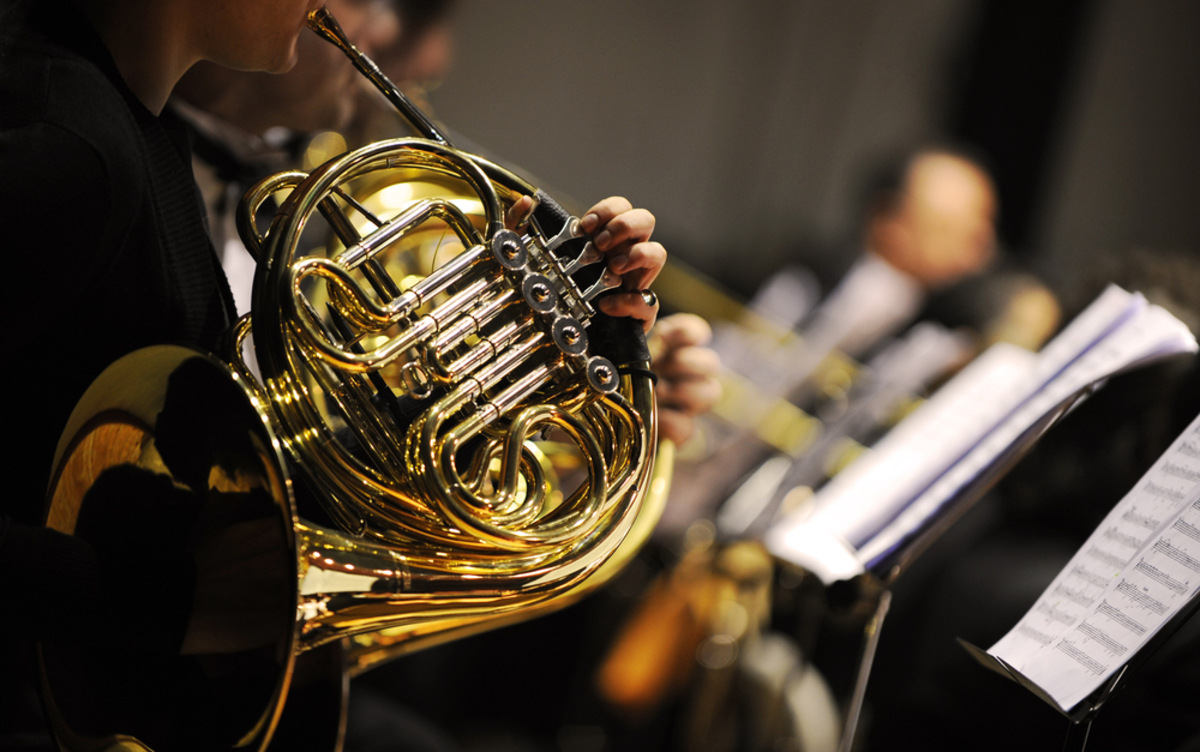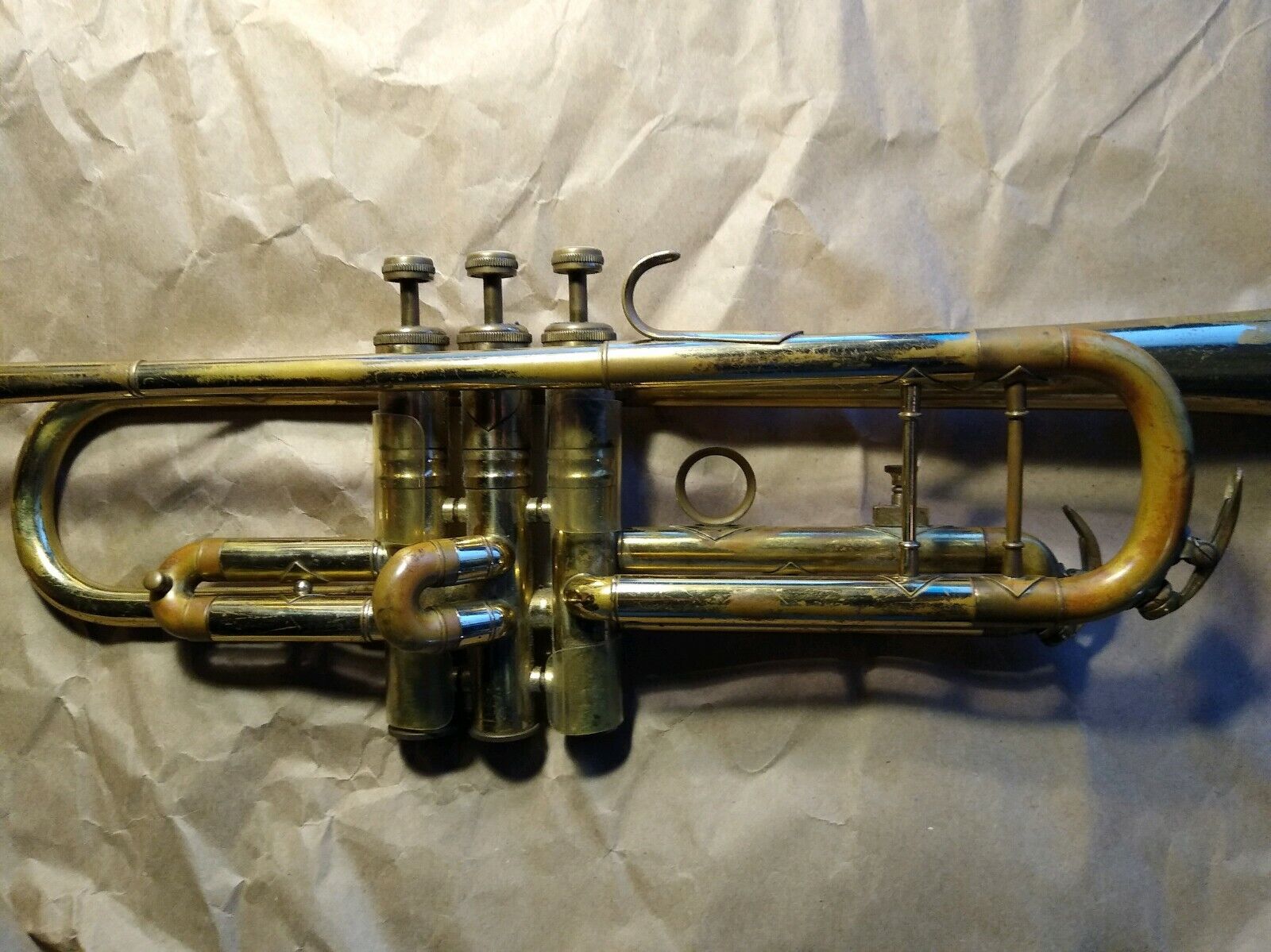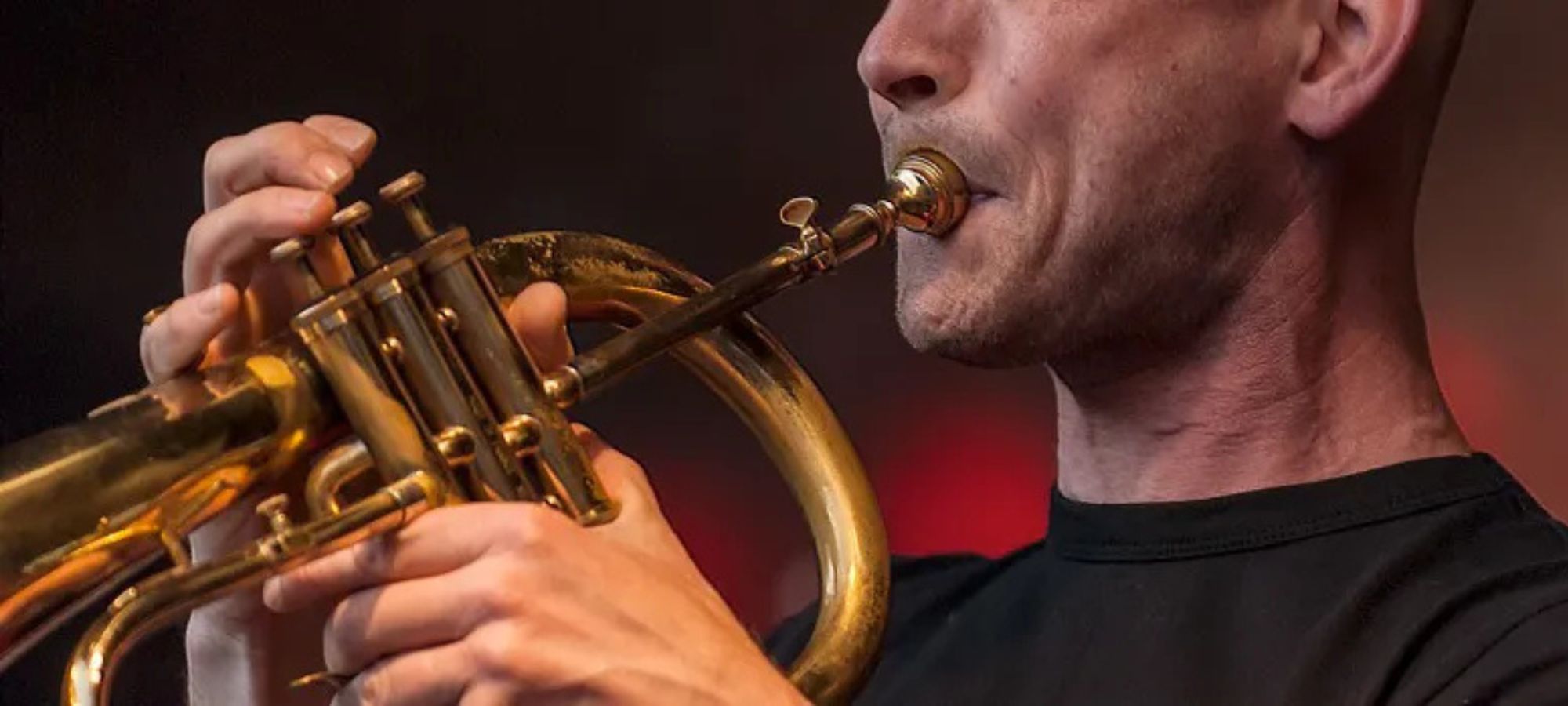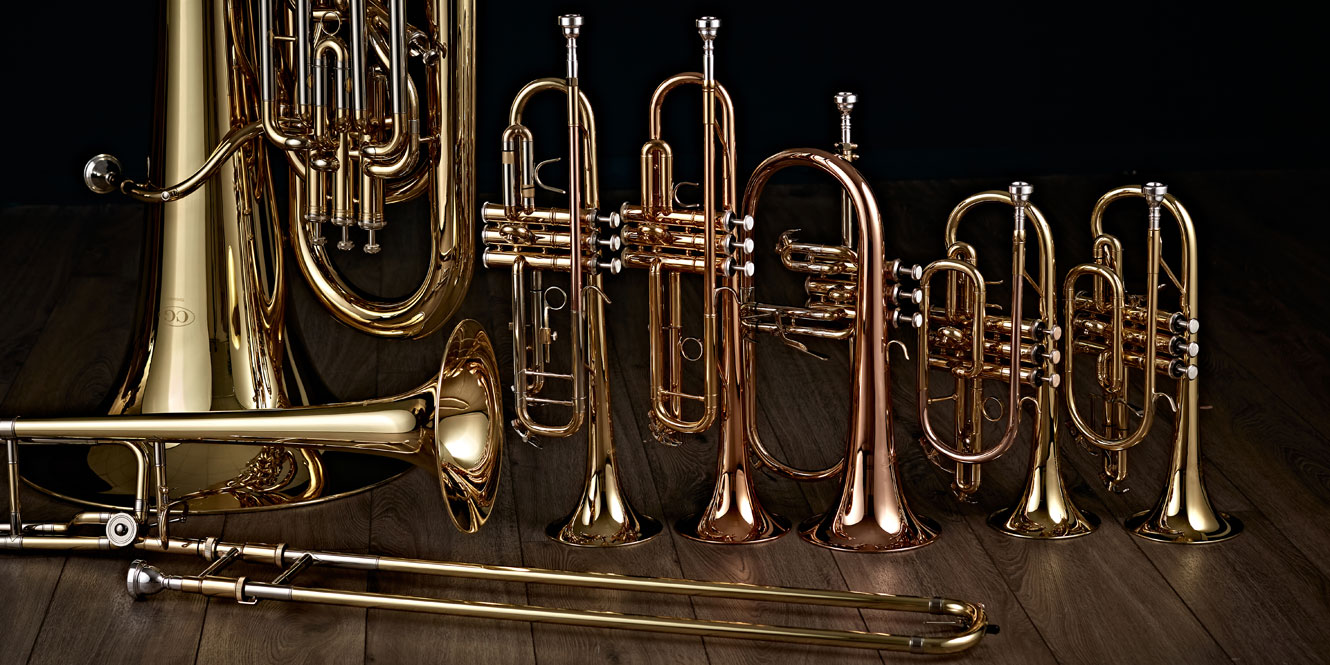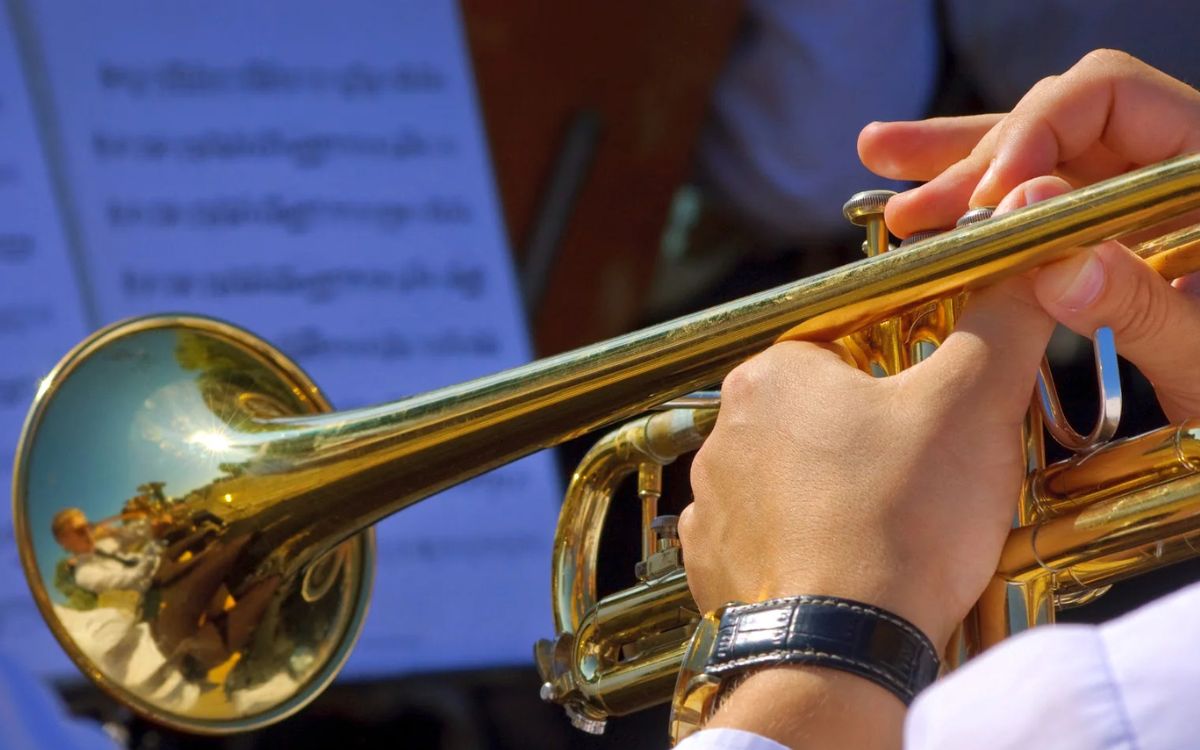Home>Instruments>Brass Instruments>Why Are Brass Instruments Harder Than Guitar
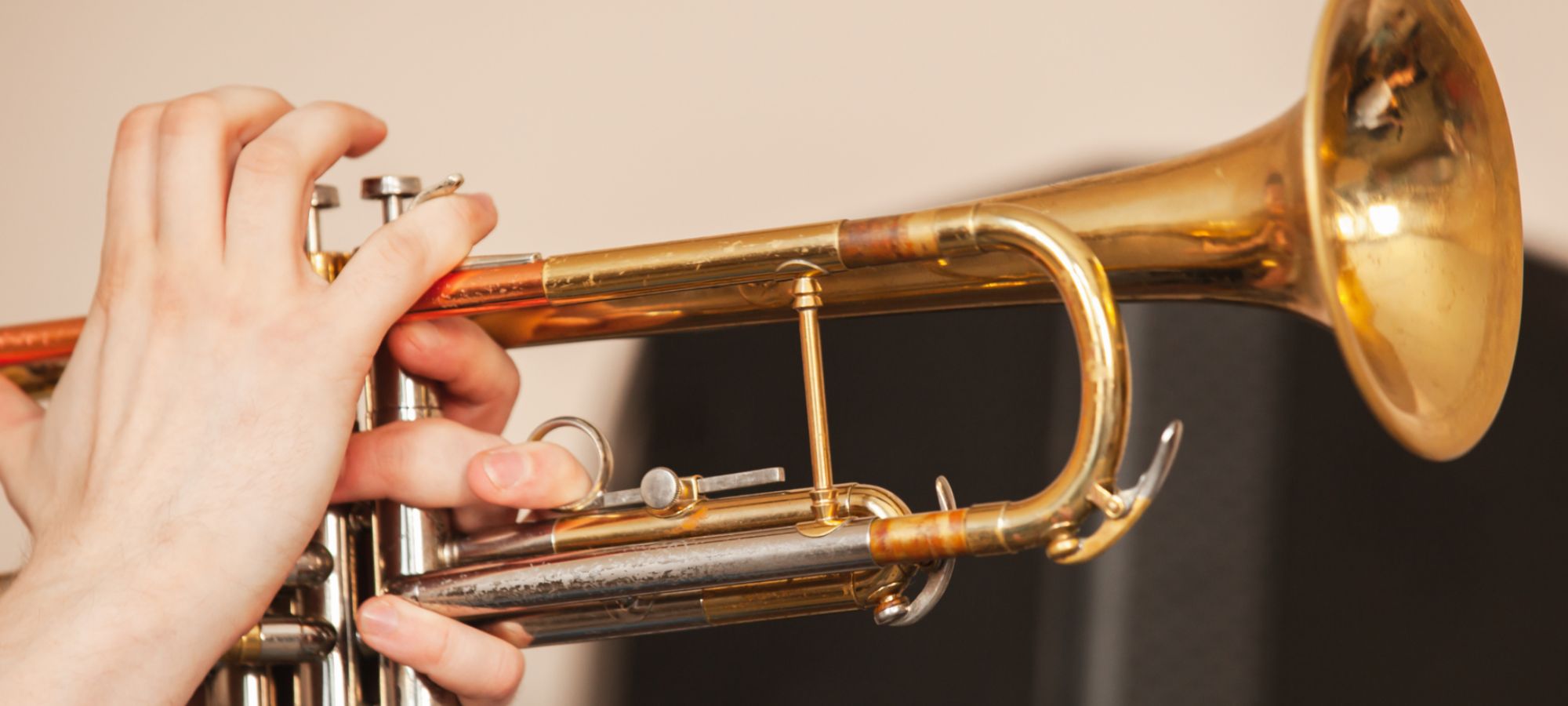

Brass Instruments
Why Are Brass Instruments Harder Than Guitar
Published: January 16, 2024
Discover why brass instruments are more challenging to learn than playing the guitar. Explore the unique techniques and skills required to master these beautiful brass instruments.
(Many of the links in this article redirect to a specific reviewed product. Your purchase of these products through affiliate links helps to generate commission for AudioLover.com, at no extra cost. Learn more)
Table of Contents
- Introduction
- The Nature of Brass Instruments
- The Complexity of Brass Instrument Technique
- The Embouchure Challenge
- The Physical Demands of Playing Brass Instruments
- The Importance of Breath Control
- The Role of Lip Strength and Flexibility
- The Role of Finger Dexterity
- The Challenges of Brass Instrument Maintenance
- Conclusion
Introduction
When it comes to musical instruments, the brass section holds a unique place of honor. From the bold and majestic sound of trumpets to the mellow and resonant tones of tubas, brass instruments have captivated musicians and audience members alike for centuries. However, behind the beautiful melodies and harmonies lies a unique set of challenges that make brass instruments harder to play than guitars or other instruments.
Brass instruments, unlike guitars which primarily rely on strings, produce sound through the vibration of the musician’s lips against a cup-shaped mouthpiece. This technique, known as brass embouchure, requires a combination of precise lip control, breath support, and finger dexterity.
In addition to the intricacies of technique, brass instruments also demand physical strength and endurance. Playing a brass instrument requires strong lip muscles and a flexible embouchure, as well as the ability to maintain control over breath and airflow. Furthermore, the maintenance of brass instruments can be a labor-intensive task, requiring regular cleaning, lubrication, and repairs.
In this article, we will delve into the nature of brass instruments and explore why they are often considered more challenging to play than guitars or other instruments. By understanding the unique obstacles faced by brass musicians, we can gain a deeper appreciation for their dedication and skill.
The Nature of Brass Instruments
Brass instruments are a family of musical instruments that are characterized by their construction from brass or other metal alloys. They produce sound by the vibrating lips of the musician, which create a buzzing noise that resonates inside the instrument, ultimately forming the desired pitch and tone. Brass instruments include trumpets, trombones, french horns, tubas, and more.
One of the fundamental challenges of playing a brass instrument is the need for precise control over the player’s embouchure, which refers to the position and tension of the lips and facial muscles on the mouthpiece. This embouchure control is crucial for producing a clear and resonant sound. Unlike string instruments, such as guitars, where the sound is created by plucking or strumming the strings, brass players rely on their lip muscles to shape the sound and control the pitch.
Another defining characteristic of brass instruments is their cylindrical or conical design, which contributes to the unique sound they produce. The length and shape of the instrument’s tubing determine its pitch range and timbre. This requires the player to master and adjust their airstream and lip tension to produce the desired notes accurately. The ability to navigate through the various harmonics and partials that brass instruments can produce adds an additional layer of complexity to playing them.
Moreover, brass instruments are often played with intricate valve mechanisms or slide assemblies that allow the player to change the pitch by altering the length of the tubing. These valves or slides need to be precisely operated while maintaining proper embouchure control and breath support. This coordination between the hands, lips, and air control adds another layer of difficulty to playing brass instruments.
Overall, the nature of brass instruments presents unique challenges that require a combination of technical skill, physical stamina, and artistic interpretation. From the intricate embouchure control to the mastery of valves or slides, brass players must develop a deep understanding of their instruments to produce the captivating and powerful sound that defines their art.
The Complexity of Brass Instrument Technique
Playing a brass instrument requires a high level of technical proficiency and skill. Brass players must develop a strong foundation in embouchure technique, finger dexterity, and breath control to navigate the instrument’s range and achieve the desired musical expression.
One of the key aspects of brass instrument technique is embouchure control. The embouchure refers to the position and tension of the lips and facial muscles on the mouthpiece. Achieving the right balance of lip tension, mouthpiece placement, and air support is crucial for producing a clear and resonant sound. Brass players spend countless hours practicing and refining their embouchure to develop a consistent and reliable tone across the instrument’s range.
Additionally, brass instruments often require the mastery of intricate fingerings or slide positions to produce different notes. Trombonists, for example, must slide their hand along the slide to hit specific pitches, while trumpet players use a combination of valve combinations to achieve the desired notes. Coordinating these finger movements with proper embouchure control and breath support requires considerable skill and precision.
Another aspect of brass instrument technique is the understanding and execution of articulation and phrasing. Articulation refers to how the musician starts and ends each note, whether it’s a sharp attack or a smooth and connected legato. Phrasing involves shaping the music by manipulating the dynamics, accents, and subtle nuances to convey the intended musical expression. Brass players must master and control these nuances to bring the music to life and communicate their musical interpretation effectively.
Furthermore, intonation is a critical aspect of brass instrument technique. Due to the inherent nature of these instruments, players must constantly adjust their embouchure, air support, and slide positions to maintain accurate pitch. Brass instruments tend to be more prone to intonation issues compared to other instruments. Developing a keen sense of pitch and the ability to make real-time adjustments is essential for playing in tune with other musicians.
The complexity of brass instrument technique requires constant practice and refinement. It takes years of dedicated effort to build the necessary skills and achieve proficiency in playing these instruments. Brass players are constantly honing their technique to tackle the challenges presented by the music they play and to express their artistry with precision and finesse.
The Embouchure Challenge
The embouchure is a central aspect of playing brass instruments and presents a significant challenge for musicians. It refers to the coordination and control of the muscles surrounding the mouth and lips to produce the desired sound. Developing and maintaining a proper embouchure is vital for achieving a clear tone, accurate pitch, and dynamic range.
The embouchure challenge starts with finding the correct placement of the mouthpiece on the lips. It involves finding the right balance between the upper and lower lip, ensuring that the lips create a seal against the mouthpiece while still allowing vibration to occur. This placement varies between players, depending on factors such as lip shape and size.
Once the proper placement is established, brass players must focus on achieving the right lip tension. The tension of the lips determines the resistance against the airstream and thus affects the sound production. Too tight or too loose lips can result in difficulties in controlling pitch, tone quality, and endurance.
Building the necessary strength and endurance in the embouchure muscles is another aspect of the challenge. The muscles in the lips, cheeks, and facial area need to develop the strength to support extended playing periods. Regular and focused practice is necessary to build up these muscles over time.
Brass players also face the challenge of adapting their embouchure to different dynamics and playing styles. Playing softly versus loudly requires adjustments in lip tension and airstream control. Transitioning between different registers of the instrument, such as high notes versus low notes, also demands changes in embouchure formation and air support.
Maintaining consistency in the embouchure can be particularly challenging for brass players. Elements such as fatigue, changes in weather or air temperature, and even changes in the player’s physical or emotional state can influence the embouchure’s stability. Developing the ability to adapt and adjust the embouchure as needed is essential for maintaining consistent performance.
Overcoming the embouchure challenge requires focused and dedicated practice. Brass players spend hours working on exercises that target the embouchure muscles and develop control and flexibility. They also seek guidance from teachers and mentors to ensure they are using proper technique and addressing specific issues that may arise.
While the embouchure challenge can be demanding, it is also a rewarding part of playing brass instruments. Mastering the embouchure allows musicians to unlock the full potential of their instrument, expressing their musicality with clarity and precision.
The Physical Demands of Playing Brass Instruments
Playing a brass instrument is not just a mental and technical challenge; it also requires a significant amount of physical exertion. Brass players must possess strength, endurance, and control over their breath and body to produce the desired sound and perform with consistency.
One of the primary physical demands of playing brass instruments is breath control. Unlike other instruments where the breath is used more passively, brass players rely on their breath to generate the necessary airflow to produce sound. They must develop the ability to take in large volumes of air and efficiently expel it through the instrument. Developing strong breath support allows for extended phrasing, sustained notes, and dynamic control.
Furthermore, brass musicians must maintain consistent breath control while navigating through challenging musical passages. This requires precise coordination between the air supply and the manipulation of embouchure and fingerings. It can be physically demanding to maintain a steady stream of airflow, especially during fast and technically demanding sections.
In addition to breath control, playing brass instruments also places physical strain on the upper body muscles. The arms and shoulders of trombonists and french horn players must support the weight of the instrument and move the sliding sections, while trumpet players and tuba players hold their instruments with flexed elbows and rely on the support of their hands and fingers. This sustained position and the repetitive movements involved can lead to muscle fatigue and potential discomfort if not managed properly.
Moreover, the act of playing brass instruments engages the facial muscles in a unique way. The muscles around the lips, cheeks, and jaw work in sync to create and shape the sound. These muscles need to be strong and flexible to handle the physical demands of playing brass instruments. Regular and focused practice helps to build the necessary strength and coordination in these muscles.
Overall, playing brass instruments requires physical endurance, proper posture, and muscular control. Musicians must train their bodies to meet the demands of long playing sessions, challenging musical passages, and precise control over their instrument. Regular physical conditioning, along with proper technique and warm-up routines, is essential to prevent strain and injury and ensure optimal performance.
By understanding and addressing the physical demands of playing brass instruments, musicians can effectively care for their bodies and develop the necessary strength and stamina to unlock their full musical potential.
The Importance of Breath Control
Breath control is a fundamental aspect of playing brass instruments and plays a crucial role in producing a beautiful and expressive sound. It involves the ability to take in an adequate amount of air, maintain proper airflow, and regulate the breath to achieve control over dynamics, articulation, and phrasing.
One of the key reasons breath control is vital for brass players is the direct correlation between airflow and sound production. The way air is directed into the instrument determines the volume, tone quality, and resonance of the sound produced. By controlling the airflow, musicians can manipulate the dynamics, creating a soft, gentle tone or a powerful, fortissimo sound. Effective breath control also allows for seamless transitions between different dynamic levels, enhancing the musical expression.
Breath control also plays a significant role in the articulation of notes. Brass players utilize various techniques, such as tonguing and slurring, to shape each note and create distinct attacks and releases. Proper breath control ensures precise and clean articulation, contributing to the clarity and expressiveness of the music being performed.
Furthermore, breath control is crucial for phrasing and musical interpretation. By consciously regulating the breath, brass players can shape and phrase musical passages, adding nuances and expressive elements. The controlled release of breath through the instrument enables musicians to create musical lines with direction, meaning, and emotional impact.
In addition to its musical significance, breath control is essential for maintaining endurance during extended playing periods. Brass instruments require sustained breath support to maintain a consistent sound and sustain notes for an extended period. Musicians with efficient breath control can sustain longer phrases without compromising tone quality or experiencing physical fatigue.
The development of proper breath control involves exercises and techniques designed to strengthen the respiratory muscles, increase lung capacity, and improve breath management. Regular practice of exercises such as long tones, lip slurs, and breathing exercises enhances the muscles’ ability to support a continuous and controlled airflow. Brass players need to cultivate a deep awareness of their breathing patterns and develop the ability to engage the diaphragm effectively.
Overall, breath control is a critical element in playing brass instruments. It directly influences the sound production, articulation, phrasing, and overall musicality. By mastering breath control, brass musicians can unlock their instrument’s full potential and deliver performances that are expressive, dynamic, and captivating.
The Role of Lip Strength and Flexibility
Playing a brass instrument requires not only precision and control but also a strong and flexible set of lips. The muscles in and around the lips play a crucial role in producing the desired sound and executing the intricate techniques required for brass playing.
Lip strength is essential for brass musicians as it directly affects the ability to control the embouchure and maintain consistent tone production. Strengthening the lips allows for greater endurance and control over the instrument. The stronger the lip muscles, the better the player can sustain long phrases and perform technically demanding passages without fatigue or loss of sound quality.
In addition to strength, lip flexibility is another vital aspect of brass playing. The ability to manipulate the lips and change the shape of the embouchure is crucial for producing a variety of pitches, articulations, and tonal colors. Flexible lips enable brass players to navigate through the instrument’s range smoothly and effortlessly, allowing for greater expressiveness in their performance.
Developing lip strength and flexibility requires consistent practice and targeted exercises. Brass musicians often incorporate specific exercises such as lip slurs, lip trills, and buzzing into their daily routine to build strength and improve flexibility. These exercises focus on isolating and challenging the lip muscles, gradually increasing their capabilities over time.
Moreover, musicians must learn to find the balance between strength and relaxation in their embouchure. Too much tension in the lips can inhibit flexibility and result in a strained sound. Conversely, insufficient lip firmness can lead to a lack of control and a weakened overall tone. Developing the ability to find this balance through focused practice and guidance from experienced teachers is crucial for achieving optimal performance.
It is important to note that lip strength and flexibility are not solely dependent on physical attributes. Musicians must also maintain a consistent practice routine to keep their lip muscles conditioned and ready for performance. Neglecting practice can lead to a loss of strength and flexibility, making it more challenging to achieve the desired sound quality and execute advanced techniques.
Ultimately, the role of lip strength and flexibility in brass playing cannot be overstated. Developing these qualities allows musicians to unlock the full potential of their instrument, enabling them to create a rich and nuanced sound, execute challenging passages, and express their musicality with precision and control.
The Role of Finger Dexterity
While brass instruments are primarily controlled by the player’s embouchure and breath control, finger dexterity still plays a significant role in the execution of certain techniques and the navigation of the instrument’s range. The agility and coordination of the fingers on the valves or slide assembly are crucial for playing brass instruments with precision and accuracy.
Brass instruments, such as trumpets and tubas, often feature valve mechanisms that allow the player to change the pitch by pressing combinations of valves. On the other hand, trombones utilize a slide assembly to alter the length of the tubing. Mastery of these fingerings and slide positions enables brass players to access different pitches, scales, and intervals smoothly.
Developing finger dexterity involves honing fine motor skills and muscle memory. Brass musicians spend hours practicing scales, arpeggios, and technical exercises to enhance the speed and accuracy of their finger movements. Through repetition and focused practice, they train their muscles to respond quickly and precisely to the musical demands presented in a piece of music.
Moreover, finger dexterity is crucial for executing ornamentation and trills in brass music. These embellishments require the player to rapidly alternate between notes or add ornamentation to a sustained note. A high level of finger dexterity enables brass players to execute these embellishments seamlessly and with clarity.
Additionally, finger dexterity plays a role in rapid articulation and tonguing. Brass players use their fingers in coordination with their embouchure to produce crisp and articulate notes. The ability to articulate swiftly and cleanly is essential for playing fast passages, adding expression, and conveying the intended musical phrasing.
While finger dexterity may not be as prominent in brass playing as in string or piano playing, it is still an integral part of mastering a brass instrument. The intricate fingerings and slide positions require precise control and coordination, ensuring accurate pitch production and seamless transitions between notes.
Regular practice and attention to finger dexterity are necessary to maintain and develop this skill. Brass players should incorporate exercises that focus on improving finger speed, accuracy, and coordination into their practice routine. By doing so, they can enhance their overall playing technique and unlock a wider range of musical possibilities.
Ultimately, the role of finger dexterity in brass playing complements the core skills of embouchure control and breath support. It allows brass musicians to fully utilize the capabilities of their instrument and achieve a level of technical mastery that enhances their musical expression.
The Challenges of Brass Instrument Maintenance
Brass instruments require regular maintenance to ensure optimal performance and longevity. Proper care and upkeep help preserve the instrument’s sound quality, prevent damage, and address common issues that arise from regular use. However, brass instrument maintenance presents a unique set of challenges that musicians must address to keep their instruments in top condition.
One of the primary challenges of brass instrument maintenance is keeping the instrument clean. The inner and outer surfaces of brass instruments can accumulate dirt, dust, and oils from the player’s hands, saliva, and environmental factors. Regular cleaning is necessary to remove these contaminants and maintain the instrument’s overall hygiene. Cleaning brass instruments can be time-consuming, especially for instruments with complex tubing systems. The player must disassemble the instrument and clean each individual component thoroughly. If not addressed, dirt and residue build-up can affect sound quality and lead to more severe issues over time.
Furthermore, corrosion can pose a significant challenge in brass instrument maintenance. Brass instruments, when exposed to moisture and certain environmental conditions, can develop patina and oxidization, leading to discoloration and deterioration of the instrument’s surface. This corrosion not only affects the appearance but can also impact the instrument’s playability and sound quality. Preventive measures, such as applying protective coatings or regularly oiling the instrument, can help mitigate corrosion risks.
The mechanical components of brass instruments, such as valves or slides, also require specific care and maintenance. Valves need to be regularly lubricated to ensure smooth and efficient movement. Slides must be cleaned and greased to prevent sticking or sluggishness. Ensuring that the instrument’s mechanical parts are in proper working order is crucial to prevent performance issues and maintain a consistent playing experience.
In addition to regular cleaning and maintenance, brass instruments may require occasional repairs or adjustments. Valves may need to be re-strung, slides aligned, or worn-out parts replaced. These repair and maintenance tasks often require the expertise of a professional instrument technician. Finding a reputable and knowledgeable technician who specializes in brass instruments can be a challenge in itself.
Finally, brass instrument maintenance requires musicians to establish a routine and make it a priority. Regular cleaning, oiling, and servicing should become a part of the musician’s practice and performance routine. Neglecting maintenance can lead to a degradation in sound quality, performance issues, and potentially costly repair work in the future.
While brass instrument maintenance presents its challenges, it is essential for preserving the instrument’s performance and maximizing its lifespan. By dedicating time and effort to proper cleaning, lubrication, and repair, brass musicians can ensure that their instruments are in optimal condition and ready to produce the best possible sound.
Conclusion
In conclusion, brass instruments present a unique set of challenges that set them apart from other musical instruments. From the intricate embouchure control to the physical demands placed on the player, brass instruments require a high level of skill, dedication, and perseverance. The nature of brass instruments, with their reliance on lip vibration and breath control, gives them a distinct sound and expressive capability.
The complexity of brass instrument technique, including embouchure control, finger dexterity, and breath control, poses significant challenges for musicians. Developing a strong and flexible embouchure, along with mastering finger movements and breath management, requires hours of practice and focused attention.
Additionally, maintaining brass instruments presents its own set of challenges. Regular cleaning, addressing corrosion and mechanical issues, and finding reputable technicians for repairs are all important aspects of instrument care and longevity.
Despite the challenges, brass musicians embrace the beauty and power that these instruments offer. Through their dedication, they continue to refine their technique, express their musicality, and create captivating music that resonates with audiences.
By understanding and appreciating the complexities and challenges of brass instruments, we can gain a deeper admiration for the skill and artistry of brass musicians. Their commitment to mastering these instruments and overcoming the unique hurdles they present is a testament to their passion for music and their unwavering dedication to their craft.
So, the next time you hear the commanding sound of a trumpet or the resonant tones of a tuba, take a moment to appreciate the extraordinary journey that led to that performance. The challenges faced and overcome by brass musicians bring forth the melodies and harmonies that enrich our lives and remind us of the profound power of music.

